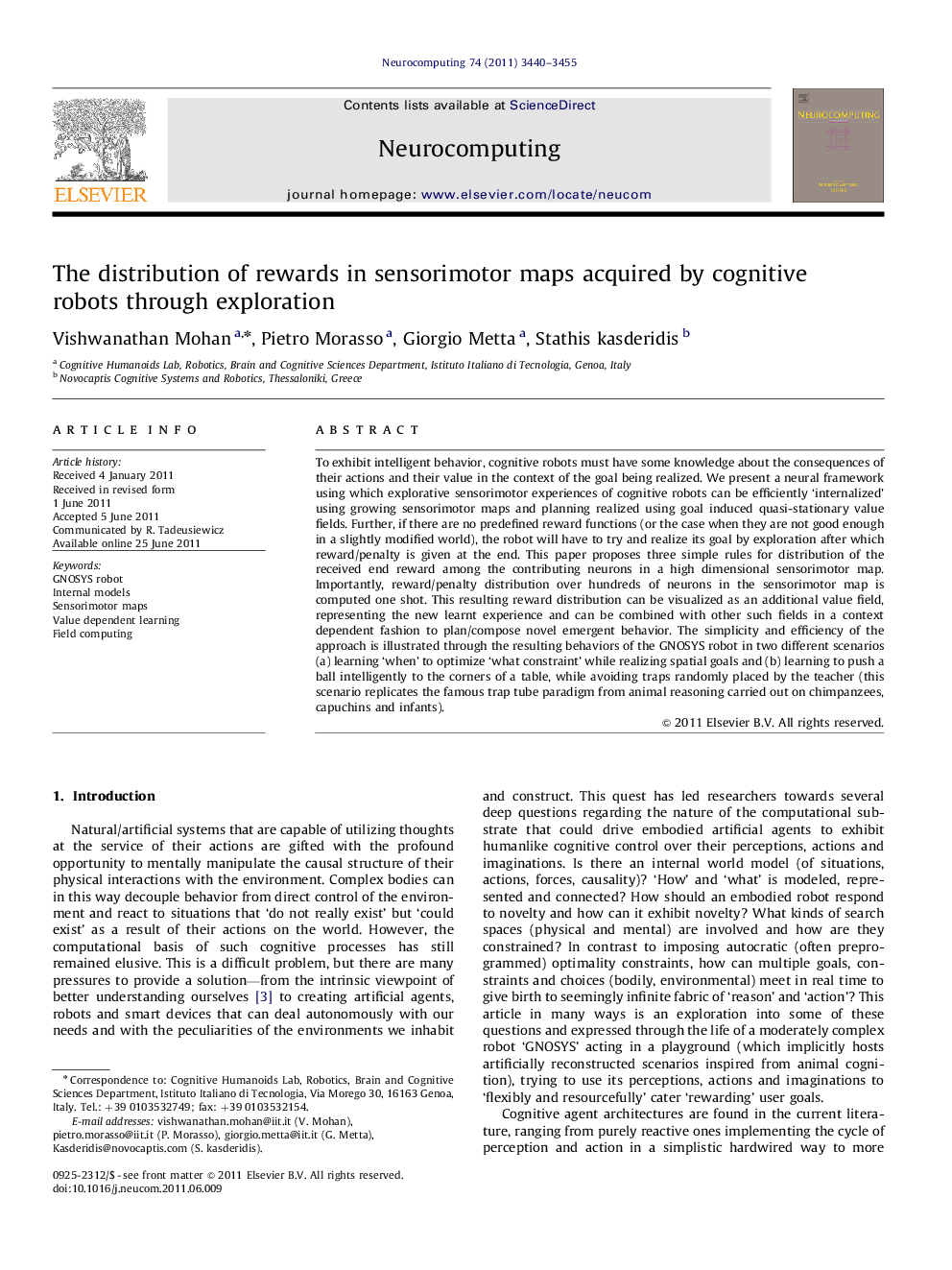| Article ID | Journal | Published Year | Pages | File Type |
|---|---|---|---|---|
| 408062 | Neurocomputing | 2011 | 16 Pages |
To exhibit intelligent behavior, cognitive robots must have some knowledge about the consequences of their actions and their value in the context of the goal being realized. We present a neural framework using which explorative sensorimotor experiences of cognitive robots can be efficiently ‘internalized’ using growing sensorimotor maps and planning realized using goal induced quasi-stationary value fields. Further, if there are no predefined reward functions (or the case when they are not good enough in a slightly modified world), the robot will have to try and realize its goal by exploration after which reward/penalty is given at the end. This paper proposes three simple rules for distribution of the received end reward among the contributing neurons in a high dimensional sensorimotor map. Importantly, reward/penalty distribution over hundreds of neurons in the sensorimotor map is computed one shot. This resulting reward distribution can be visualized as an additional value field, representing the new learnt experience and can be combined with other such fields in a context dependent fashion to plan/compose novel emergent behavior. The simplicity and efficiency of the approach is illustrated through the resulting behaviors of the GNOSYS robot in two different scenarios (a) learning ‘when’ to optimize ‘what constraint’ while realizing spatial goals and (b) learning to push a ball intelligently to the corners of a table, while avoiding traps randomly placed by the teacher (this scenario replicates the famous trap tube paradigm from animal reasoning carried out on chimpanzees, capuchins and infants).
